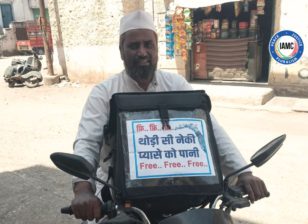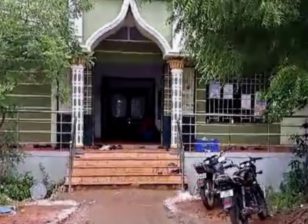Saharanpur Violence: In riot-hit Muzaffarnagar’s vicinity, Akbargarh stands as shining example of communal harmony
Editor’s note: The BJP, its ideological lodestar RSS, and even the BSP, a party with moorings in Dalit identity, have, in recent months, outdone themselves to court the Dalit constituency. The community itself has found new ways to assert its leverage over Indian political parties and reinforce its place in society. Firstpost will travel across Uttar Pradesh, the test bed of India’s Dalit politics, to record how these changes have altered life in its villages, towns and cities.
The dark memories of the Hindu-Muslim rioting that took place in Western Uttar Pradesh’s Muzaffarnagar district in 2013 and displaced nearly 55,000 people are still alive in the minds of the locals. When Firstpost hit ground zero to assess the nuances of Dalit politics in the region, the first piece of news the locals shared was that during the Bharat Bandh (on 2 April) against the alleged dilution of the SC/ST (Prevention of Atrocities) Act, thousands of Dalits had assembled in Muzaffarnagar outside the Nai Mandi police station and a fierce fight between the Dalit crowds and police had ensued.
The life of a Dalit youth was lost in police firing. The police administration had blamed the Bhim Army for triggering the attack on the police station. Bhim Army district chief Upkar Bavra was taken into custody till 26 April.
It was for the first time since the 2013 riots that a violent incident of such magnitude took place. Firstpost reached Akbargarh in the vicinity of Muzaffarnagar, where Dalits are in majority, to understand better their grievances and how they perceive the socio-political changes of the recent times.
The Akbargarh Masjid, that is maintained by Dalits in living in the village. Firstpost Hindi
As per the 2011 census, Muzaffarnagar’s population of four lakh comprised 52 percent Hindus and 41 percent Muslims and 7.3 percent belonging to Dalit communities. Muzaffarnagar district has six Assembly constituencies – Muzaffarnagar town, Budhana, Khatauli, Meerapur, Purqazi, Charthawal.
Akbargarh, which is in the Charthawal Assembly zone is located about 15 kilometres from Muzaffarnagar town and has a population of around 2,500, of which 70 percent are Dalits. In the name of connectivity, the village has only a poorly maintained road but the streets within the village are paved. The houses here, some old and new, are well constructed and house a mix of middle class and poor families.
Locals sitting on folding cots scattered along the pavements inform Firstpost that Akbargarh is known for a mosque built in the pre-Independence era. Astoundingly, there isn’t a single Muslim family in the village. Yet, the people of the village see to the upkeep of the mosque in which Namaz is offered daily.
Recently, villagers collected funds to paint the mosque and the scaffoldings, work for which has started. Imam Ali Mohammad, who visits the mosque daily from a village nearby, conveys his gratitude to the people of Akbargarh, stating that they provide him with all the support and not once does he get the feeling of being amongst those from a faith different from his own.
Advocate Mohit Lal, who is a resident of Akbargarh, says it is not as though there haven’t been attempts to disturb the communal peace of the village. He says some anti-social elements have tried to question the presence of a mosque in Akbargarh but none have been able to cause any damage to it.
He also suggests that attempts have been made to change the name of the village from Akbargarh to Pratapgarh, but the opinion of the villagers is that neither should the name be changed nor should the mosque, in which passersby halt for the night, suffer any damage. Mohit Lal also mentions that a mazhaar of a pir baba is somewhere in the vicinity of the mosque, around which he had built a boundary wall at his personal expense. Today, he says, the villagers consider and guard it as their heritage.
Villagers mentioned that Akbargarh provides leadership to the Dalits of nearby villages and has been at the forefront of Dalit unity. They talk about how every other child of the village had participated in the Bandh staged on 2 April and had held a peaceful demonstration and organised a march to Muzaffarnagar town, ensuring that the protest was carried out without violating the law.
It also emerged during the conversation that Akbargarh is a peaceful village with no caste rivalry or ill-will and that the Dalits here are well aware of their rights. The Shabbirpur village in the Saharanpur District that witnessed a fierce fight between Thakurs and Dalits last year is just a few kilometres away and many Dalits of Akbargarh have relatives there, which is why the violence of Shabbirpur that had an all-India impact on the attitude of the Dalits also had an effect here.
On being asked who their leader was and at whose guidance they carried out protests, villagers state that their leader is the newspaper that crosses broken roads and reaches there every morning. They first say the most people in the village are Bahujan Samaj Party voters but admit that in the 2014 Lok Sabha election, some had voted for Modi. But they seem discontent with the BJP at this point.
Shivkumar, a Dalit youth who has completed his BTech from a private engineering college but failed to secure to a government job and got into farming, states that public works, like electric power supply, had been completed during the days of BSP rule. He adds that not even a single handpump has been installed after the BSP demitted office as the current crop of leaders think this to be ‘Behenji’s’ (Mayawati’s) village and do nothing here.
Even in the light of the ‘Gram Swaraj Abhiyan’ initiated to spread awareness about the pro-poor initiatives of the government, the locals say that no leader had cared to visit Akbargarh.
Gulbir, who is associated with the BSP and known as ‘Dr Gulbir’, as he runs a small medical practice, has a good feel of the political pulse of the region. He feels that the Bhim Army is more of a social organisation and as such would not hold too much electoral influence. In his view, social and political organisations are structured differently.
While social organisations have a sizeable reach and spread, they could perhaps fail if they assumed a political role. An example he cites is that of the Bharatiya Kisan Union, which he refers to as one of the strongest social organisations but one that also got only 9,000 votes in Khatauli in 2007.
Some days ago, BSP’s national president Mayawati, who spent four terms as chief minister of Uttar Pradesh, likened the Bhim Army to the Rashtriya Swayamsevak Sangh. Explaining why she may have called the Dalit army an agent of the RSS, Gulbir interjects himself to say that when Mayawati noticed Dalits leaning towards the Bhim Army, she made this comparison but she too knows that the Dalits can never follow the RSS. Gulbir’s reading is that the Bhim Army may associate with the Congress but the indicators on the ground point to their support tilting in favour of Mayawati.
Moving over from its cultural and economic conditions to its economic realities, one can’t fail to notice that the prime occupation here is sugarcane farming. Akbargarh sees a good crop but off late, villagers seem upset with shifting government policies regarding sugarcane.
While the claim is that of the BJP government being pro-farmer, never before has there been a situation when the harvested sugarcane en route to the sugar mills had dried up even while on the trolley but was not procured by the mill owners, who enjoy a free run and would affect purchase of sugarcane at their own will.
The locals share that as and when the mill owners observed that sugarcane was harvested, they stopped purchase and even resorted to buying sugarcane from Haryana instead from them. The locals say that despite the fact that the Uttar Pradesh Cane Development and Sugar Mills minister Suresh Rana hails from the region, the issue of sugarcane drying up on the trolleys has not been addressed.
In spite of these problems, Akbargarh stands out as a shining example of peaceful coexistence between faiths even in the midst of all kinds of turmoil; a village located in such proximity to a town that has been the epicentre of communal violence has been able to retain and safeguard both its mosque, its name and its identity.
This article is the fifth part of a series on Dalit identity in Uttar Pradesh. Read part one, two, three and four.
Reference:





